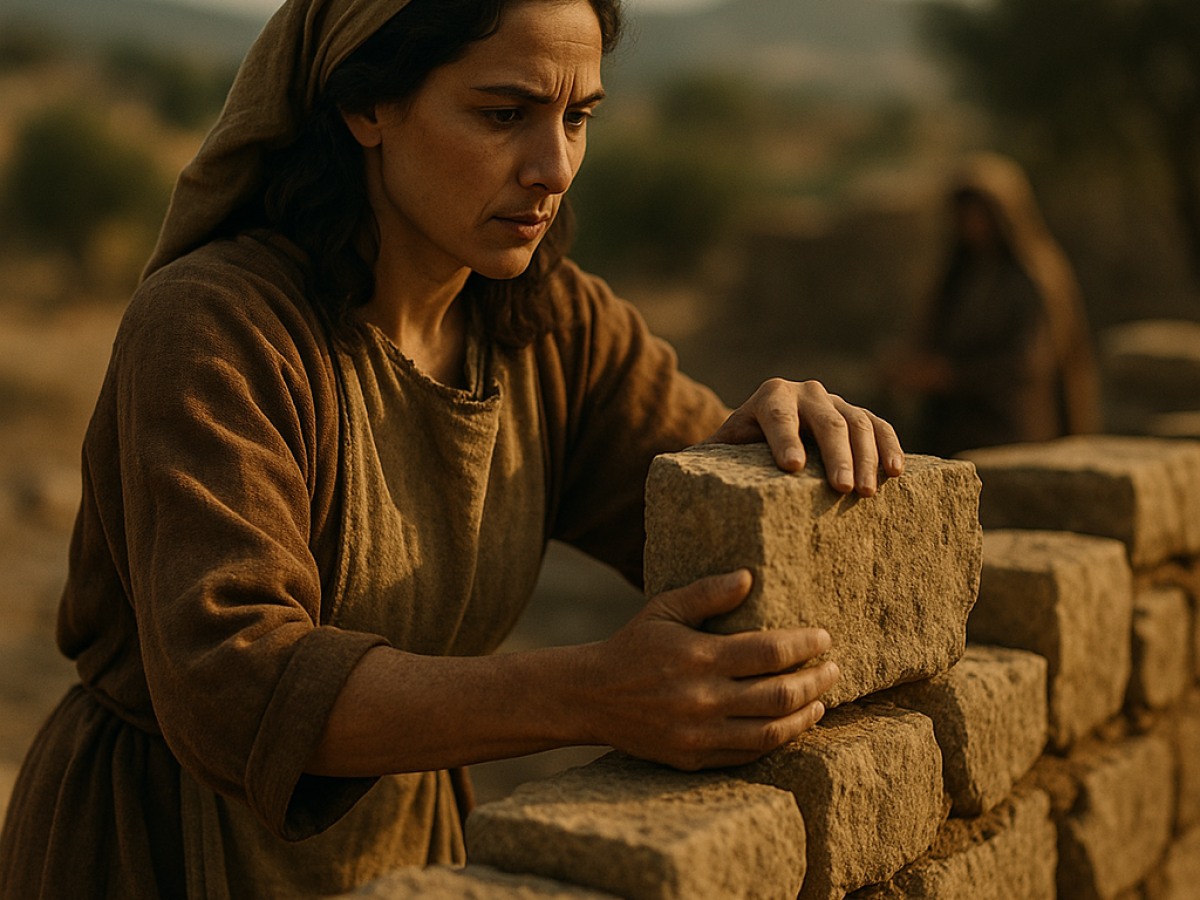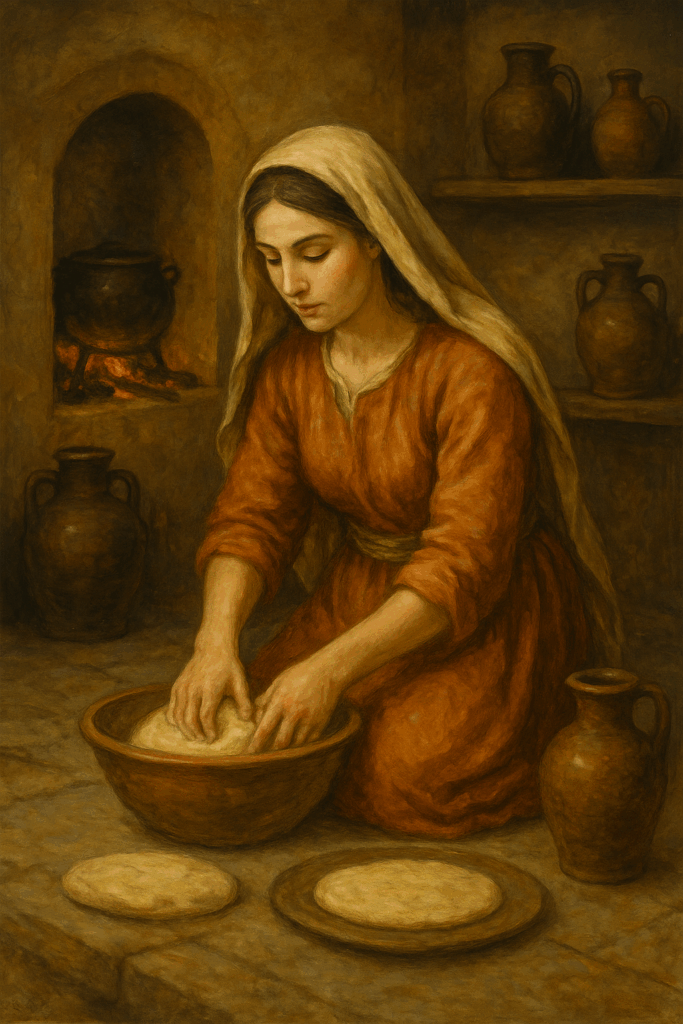
Wisdom as the Foundation for House Building
From the beginning, God designed Lady Wisdom to be a builder. The book of Proverbs declares, “By wisdom a house is built, and by understanding it is established” (Prov. 24:3). The Hebrew word for “build” (banah) is closely related to the word for “understanding” (binah). This connection tells us something profound: true building requires discernment. It takes more than bricks, walls, or even good intentions to establish something that lasts. It takes wisdom—the kind that can distinguish between good and evil, truth and deception, life and death.
This is the unique strength of the wise woman who builds her house. She doesn’t just decorate space or manage the household. She becomes the foundation, the framework, and the guiding pattern through which her home, her family, and even her community are shaped.
Lady Wisdom does not merely construct physical walls; she weaves mental, emotional, spiritual strength into the very fabric of her home. Her work echoes the women in the wilderness who stitched together the Tabernacle coverings and curtains—thread by thread, layer by layer—until the presence of God had a dwelling place. The wise woman does something similar. She knits together prayer and discernment, guidance and encouragement, discipline and compassion. What emerges is not just a “house,” but a sanctuary, a place where God’s presence can be encountered.
Her building work mirrors creation itself. In the beginning, the Spirit of God hovered over chaos. Into that void, God spoke order, separating light from darkness and filling emptiness with life. So too, the wise woman—formed in His image—brings order into the chaos around her. She tames disorder with patience. She counters despair with hope. She transforms emptiness with hospitality.
The First Builder is Wisdom
When God formed the first woman, Scripture tells us He took Adam’s tzelah, often translated as “rib,” though the word also carries the sense of “side” or better yet “image.” God built (banah) this part of Adam into the woman (Gen. 2:22). This is the first time in Scripture that the word banah is used of a person. God was not merely fashioning a companion—He was establishing the archetypal builder of the house.
The woman’s vocation parallels that of Betzalel, the craftsman chosen to construct the Tabernacle. Betzalel’s name means “in the image of El.” He was filled with the Spirit of God, endowed with wisdom, understanding, and knowledge, to design and build the sanctuary (Exod. 31:1–5). In the same way, the woman was formed in God’s image, given these same divine qualities, and entrusted with the work of constructing, nurturing, and sustaining life. She is a master builder, echoing both the design of creation and the holy Tabernacle where God dwells with His people.
The concept of the woman as helper is not well understood—as ezer or helper she is not subordinate but a deliverer-ally, one God repeatedly calls upon to rescue and protect for His purposes. And she is herself a house—a living, breathing sanctuary of life. She nurtures, teaches, models, intercedes, organizes, comforts, and shapes the next generation. She embodies the divine pattern of hospitality, covenant, and stewardship.
The wise woman’s work points to the greater sanctuary: the community of God’s people. Just as Israel was called to be a dwelling place for the Lord among the nations, so the wise woman’s household becomes a microcosm of that reality. And in the New Testament, this pattern expands to the worldwide assembly—the Church—as the Spirit knits together men and women alike into a living temple. No single person bears the full weight of that role, but within the whole community, wisdom finds its perfect expression.
Stitching the World Back Together
In a world fraying at the seams, the wise woman becomes like a holy seamstress. Wisdom stitches it back together—one prayer, one conversation, one act of courage at a time. She mends broken spirits with compassion, repairs wounded hearts with encouragement, and reinforces faith with her steadfast devotion. Her work is often unseen, uncelebrated, and undervalued. But in God’s economy, it is indispensable.
Her house, then, is not just a physical dwelling. It is a witness to the world. It is a sanctuary of protection, a place of instruction, a shelter in the storm, and a reflection of the One who builds and designs all things in perfect order. To enter such a house is to encounter a glimpse of the kingdom of God breaking into the present.
A Witness to God’s Order
Ultimately, Lady wisdom represents women who build and reflect the nature of God Himself. Just as He brought order out of chaos, so she brings life out of disorder. Just as He crafted creation with intention, so she shapes her household with care. Just as He welcomed humanity into His dwelling, so she opens her home as a place of refuge and belonging.
To be a woman of wisdom is to participate in God’s own work of creation and redemption. Her calling is not small or secondary—it is central to God’s plan for His people. Her house, her influence, her legacy become living testimonies of divine wisdom at work in the world.
The wise woman builds her house not with stone, wood, or mortar, but with wisdom, understanding, and knowledge. These materials endure long after physical walls crumble. They shape generations. They preserve faith. They create sanctuaries where God is worshiped and known.
In every age, but especially in times of chaos, the wise woman’s house becomes a beacon. It tells the world that God is a God of order, that His people are a people of hope, and that wisdom still weaves strength into fragile human lives.


Leave a Reply